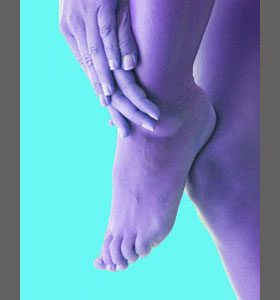
Spinal stenosis foot drop is a dramatic neurological expression which usually occurs due to narrowing of the central canal in the lower lumbar and lumbosacral spinal regions. Foot drop entails a dorsiflexion deficit in the affected side, meaning that the patient will not be able to elevate the frontal aspect of their foot.
In some rare instances, other locations of central canal narrowing can create lower body symptoms, such as sciatica and partial or total foot drop. While these circumstances may not be as common as lumbar spinal issues enacting these specific symptomatic expressions, they are certainly still possible. The existence of cervical and upper thoracic stenosis may make achieving an accurate diagnosis very difficult, especially if coincidental spinal narrowing is occurring in the lumbar levels concurrently.
This dialog provides an overview of dorsiflexion deficits that might be caused by a variety of stenotic concerns in the vertebral column.
Spinal Stenosis Foot Drop Explained
Foot drop is a frightening expression of many possible source processes typically found in the lumbar spine. Usually, the nerve which is affected is L5, although L4 and/or S1 might play a role in some patient’s symptoms.
Foot drop means that the front of the foot will not be able to be lifted easily. Patients will not be able to ambulate correctly and will have a tendency to stub or drag their toes while trying to walk. In extreme cases, the patient might not be able to walk or stand at all. The reason for the expression to occur is compression of the nerve which innervates the muscles controlling this specific movement. If the nerve is pinched, it will not function correctly and the patient will suffer motor deficit and possible sensory deficit, as well.
Pain may or may not exist along with foot drop.
Spinal Stenosis Dorsiflexion Deficit Evaluation
Diagnosis of foot drop can be made via physical exam. The patient will be asked to stand, walk and possibly stand on their heels or raise their toes. If they are unable, the diagnosis can be pronounced and now the focus will shift to ascertaining why the symptoms are taking place. Usually, a variety of testing will ensue, including diagnostic imaging, such as MRI, nerve conduction and other specific evaluations, as indicated.
The usual culprit process is central spinal stenosis or neuroforaminal stenosis in the lower back. Both processes can affect L5 and may be enacted by any of the following structural issues: herniated discs, spinal osteoarthritis, spondylolisthesis, atypical severe lumbar lordosis and even exacerbated congenital canal narrowing concerns.
Spinal Stenosis Foot Drop Deficits
While foot drop is a very specific symptom, the cause can range greatly. Besides all the above listed structural processes which can cause a dorsiflexion deficit in the frontal foot due to lumbar nerve compression, central stenosis in the cervical or even thoracic spine may also provide similar symptomatic patterns. Additionally, some patients suffer identical expressions due to localized nerve injury which might exist in the leg or foot itself. This may be due to infection, scar tissue or traumatic injury.
Finally, regional ischemia can enact foot drop, in extreme cases, when the entire neurological viability of the lower lumbar roots is threatened by significant and chronic oxygen deprivation.
Spinal Stenosis > Symptoms of Spinal Stenosis > Spinal Stenosis Foot Drop





